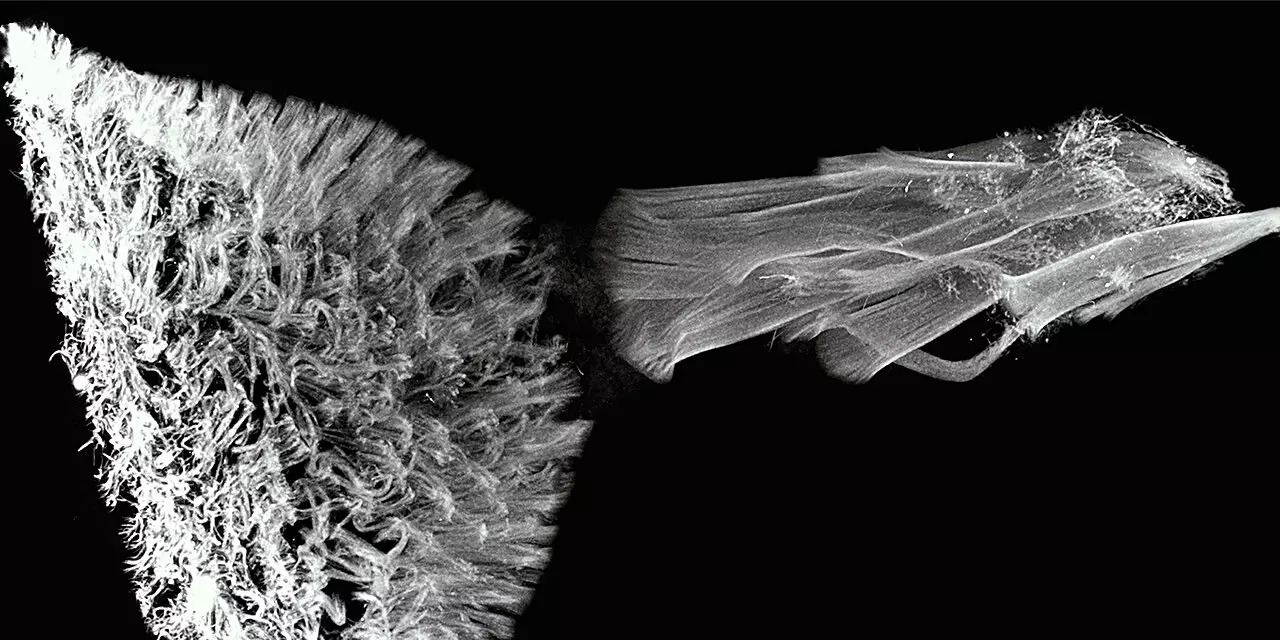Science is a dynamic field characterized by changes in perspective, where established notions are constantly challenged and redefined. The Kanso Bioinspired Motion Lab at USC’s Viterbi School of Engineering vividly exemplifies this transformative nature of science. Their groundbreaking research, particularly encapsulated in their recent publication in *Nature Physics*, offers a fresh lens through which we can understand the complexities of fluid dynamics in living organisms. This article delves not just into their findings, but also into the ramifications these insights hold for both evolutionary biology and medical science.
Deciphering Ciliated Structures: The Carpet and Flame Models
The study centers on the different mechanisms by which ciliated organs pump fluids—an essential function across various organ systems in many species. Traditionally, researchers have classified these structures into two distinct models: the “carpet” model found primarily in humans, where short, dense cilia function perpendicularly to the epithelial surface, and the “flame” model, seen in other animals, characterized by long, parallel cilia that oscillate within a confined space. This clinching dichotomy has shaped our understanding of ciliated organ function and evolution.
Yet, what the Kanso Lab has elucidated is an unparalleled connection between these two structures, suggesting that they both arise from the distinct fluid pumping needs rather than solely from an evolutionary lineage. This interpretation not only challenges long-held beliefs but also encourages researchers to look beyond traditional classificatory systems.
Form vs. Function: The Mechanics of Morphology
The research team, led by the dynamic Professor Eva Kanso and supported by brilliant minds like Ph.D. student Feng Ling and research scientist Janna Nawroth, has proposed a paradigm wherein the form of ciliated structures is intricately tied to their functional efficacy. This theme of “form follows function” has long resonated in biological sciences, yet Kanso’s findings refine it by introducing a cohesive framework that illustrates the design continuum between the two ciliary types.
Instead of viewing the “carpet” and “flame” arrangements as entirely divergent entities, they have been laid along a spectrum—wherein structural parameters such as lumen diameter and the cilia-to-lumen ratio dictate the flow rates and efficiency. At both ends of this spectrum, findings indicate that maximized flow rates are necessary not just for health, but also for normal physiological function, further underscoring the universal applicability of Kanso’s principles.
Implications for Medicine and Pathology
Beyond theoretical exploration, these insights have practical implications for medical science. Conditions such as bronchiectasis, hydrocephalus, and ectopic pregnancy, which arise from malfunctions in ciliated tissues, may soon see new avenues for treatment. Understanding the underlying mechanical principles transforming ciliated structures would allow for more targeted therapies, potentially designed by leveraging knowledge of the morpho-functional spectrum outlined by the Kanso Lab.
For instance, by applying these findings to study organ systems like the kidneys, which utilize ciliary flames for excretion, researchers might develop predictive models leading to enhanced treatments. This bridges a pivotal gap in our understanding, shifting focus from merely treating symptoms to addressing the root causes of pathologies linked to cilia.
A Novel Approach to Scientific Research
The methodology embraced by the Kanso Bioinspired Motion Lab pairs rigorous experimental work with sophisticated mathematical modeling, a dual approach that is both innovative and comprehensive. They have tackled one of the more challenging aspects of biological research—the interplay between structure and function in internal ducts—which typically eludes direct measurement due to their intricate nature.
By successfully navigating this unexplored territory, the Kanso Lab has gone beyond mere observation; they have established a dynamic model congruent with both experimental data and theoretical constructs. Their challenge to the established dichotomy of ciliary structures fosters an avenue of inquiry rich with potential, elevating our understanding of biological systems while also simplifying what has traditionally been a complex area of research.
Their work is a testament to how paradigm shifts in scientific understanding can emerge from the intersection of creativity and tenacity. These advancements not only elucidate the fluid mechanics of life but also open up new frontiers for inquiry and application in both evolutionary biology and the biomedical sciences. As this research continues to evolve, it sets a striking precedent for future explorations into the hidden intricacies of life.

